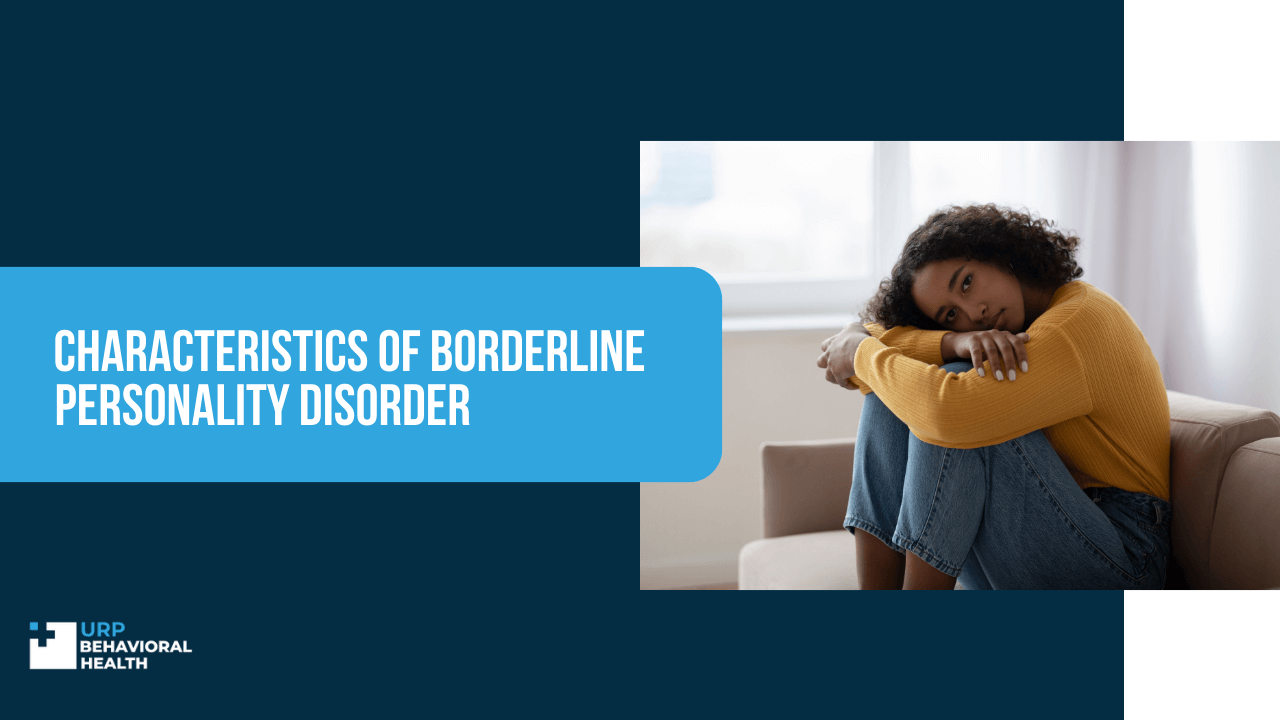Characteristics of Borderline Personality Disorder

We all struggle with maintaining healthy, balanced relationships from time to time. It’s normal to have disagreements, conflicts, and arguments, but they should be balanced with understanding, compassion, and empathy. Borderline personality disorder is a condition that’s marked by characteristics like unstable relationships and it can have a significant impact on your functioning. According to some studies, the prevalence of BPD is estimated to be around 1.6 percent in the US population, and a bigger chunk of these people are women.
Because of its symptoms, the disorder can cause a significant degree of impairment and distress for you and your loved ones. Let’s take a look at the different characteristics of BPD, what they can look like, and how they impact your functioning.


Intense and Unstable Relationships
Perhaps the most essential feature of BPD is persistent relationship instability. When you have BPD, it causes you to idealize a romantic partner or caregiver early on in the relationship. Usually, it happens when you meet them for the first time. It’s also common to demand that they spend more time with you, and you may feel the need to share intimate secrets during the first few weeks.
While it’s common for many people to feel this way, having BPD means quickly switching from idealizing the person to devaluing them. Suddenly, you may think that they don’t care enough, don’t give you enough time, and aren’t around when you need them. And even though you may nurture loved ones, it comes with the expectation that they’ll be around to meet your emotional needs.

How This Affects Your Relationship
When they’re not, your view of them shifts dramatically; suddenly, they go from being your favorite person to being cruel and punitive. This change in how you view the person is attributed to the fear of abandonment, which is a major feature of BPD as well. Swinging between idealization and devaluation can result in turbulent relationships where loved ones feel confused and frustrated with your behavior. This feeds into feelings of loneliness and a fear of rejection.
Identity Issues
The third diagnostic criterion of BPD is an identity disturbance, which is characterized by an unstable self-image. Your sense of self can change dramatically, visible through a sudden shift in values, goals, and even career aspirations. Your opinions and plans regarding different friends, careers, and sexual identities can change. This can make you seem unpredictable and inconsistent to those around you.
Your self-image can also change depending on where you are in the idealization-devaluation cycle. This includes transitioning from being needy for help and attention to being angry because you feel ‘rejected and abandoned.’ The fifth edition of the DSM by the APA also states that people with BPD also struggle with feelings of emptiness and as if they ‘don’t exist at all.’ This happens when you feel a lack of meaningful support and nurturance.

How An Unstable Self-Image Affects You
When your sense of self is constantly changing, it leads to intense distress, as well as feelings of isolation. It can also cause you to engage in impulsive and risky behaviors in an attempt to cope. This can include reckless driving, excessive spending, and even substance abuse.
Self-Harm
Although self-harm is a concern in different mental health conditions, it’s especially severe in people with BPD. For some people with BPD, self-harm is a way of gaining control over their emotions. For others, it’s a way to cope with intense unhappiness and dissatisfaction. Research indicates that people with a BPD diagnosis report severe and frequent non-suicidal self-injury (NSSI) compared to people who engage in self-harm but don’t have BPD.
Self-harm behaviors, as well as recurrent suicidal behavior, are common characteristics of borderline personality disorder. Such self-destructive actions occur due to the threat of rejection or separation from their romantic partner or caregiver. These behaviors can also occur during dissociation because they allow you to reaffirm your ability to feel something. However, for people with BPD, the most common reason for self-mutilation behaviors is the inability to regulate intense emotions.
Comorbid Conditions
According to the National Institute of Mental Health, BPD can co-occur with other mental disorders, such as PTSD, ADHD, major depression, bipolar disorder, and substance use disorders. Having co-occurring disorders makes it difficult for practitioners to diagnose BPD. That’s because symptoms like impulsivity, changing moods, dissociative symptoms, and identity disturbance occur in conditions like bipolar disorder and ADHD as well. This makes it harder to pin down the source of the symptom.
Even when practitioners manage to make an accurate diagnosis, treatment can be challenging. Symptoms of co-occurring conditions, such as low mood, anxiety, and manic episodes, can make you less receptive to therapy. Even if you don’t have a co-occurring condition, BPD symptoms are highly distressing, increasing the likelihood of experiencing symptoms like depressed mood, dissociation, and anxiety. In this case, practitioners require a multi-faceted approach to tackle your concern from different directions.

Possible Treatment Approaches
Psychotherapy
Dialectical Behavioral Therapy (DBT) is the main type of psychotherapy used for BPD. Rather than trying to find the source of the conflict, it focuses on learning skills to cope with intense emotions. Specifically, these skills are mindfulness, distress tolerance, interpersonal effectiveness, and emotional regulation. This, in turn, reduces unhelpful and self-destructive behaviors. There’s evidence that DBT is one of the most effective therapies for BPD, reducing the risk of suicidal behavior and the need for hospitalization.
Mentalization-Based Treatment (MBT) helps you be more conscious of your internal states (as well as others). Over the course of this therapy, you’ll learn to reflect on the other person’s point of view. This way, you’ll think of alternative explanations for negative interactions with others.
Medication
There are no FDA-approved medications to treat symptoms of BPD as of yet. However, some practitioners may prescribe certain medications to address associated symptoms like low mood and anxiety. These symptoms can affect your ability to participate in therapy, so prescribing them improves adherence to treatment.
Let us guide you towards healing
We know that seeking treatment can be overwhelming, but our staff is here to make the process as smooth as possible. We’re available 24/7 to address any questions or concerns you may have.

